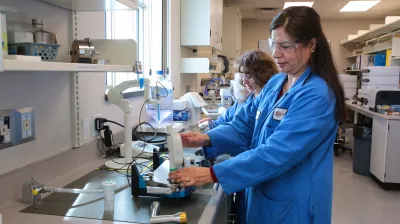Failure of Mycobacterium avium to Adhere to Interior Surfaces of Oscillating Positive Expiratory Pressure (OPEP) and Nebulizer Devices
Introduction
Risk of respiratory infection is a common concern for bronchiectasis patients often leading to caution involving use of medical devices for inhalation. M. avium is a major cause of lung infection in bronchiectasis patients and is common in household drinking water that could be used to rinse respiratory devices. Accordingly, the object of this study was to measure the adherence of M. avium cells to the interior walls of two commonly used respiratory devices.
Methods
One OPEP device (Aerobika*, Monaghan Medical) and one nebulizer device (AeroEclipse* XL BAN* Nebulizer, Monaghan Medical) were evaluated. Each device was disassembled and separately submerged in a one-liter high density suspension of M. avium for 24 hours and then air dried. A 4-cm2 area of each device part was swabbed. The swab was placed in 2 mL of sterile distilled water and vortexed to release and suspend M. avium cells. Cells were counted as colony-forming units on Middlebrook 7H10 agar media after 10 days incubation at 37°C.
Results

Conclusion
The test was designed to provide a worst-case scenario, with a very high-density suspension of M. avium cells and a long 24-hr period to allow for adherence. Compared to copper, stainless steel, galvanized steel, and PVC surfaces (average > 2,000 cells/cm2 in 24 hr.), the number of adherent M. avium cells on the surfaces of the AeroEclipse* XL BAN* Nebulizer and Aerobika* OPEP device is minimal. Thus, even under a worst-case scenario, the measurements indicate the materials comprising the Aerobika* OPEP and AeroEclipse* XL BAN* Nebulizer devices fail to collect adherent M. avium cells. This provides some assurance to patients that the risk of infection from such microorganisms will be low in the event that cleaning and disinfection is not performed robustly.
Download the Poster
Failure of Mycobacterium avium to Adhere to Interior Surfaces of Oscillating Positive Expiratory Pressure (OPEP) and Nebulizer Devices
